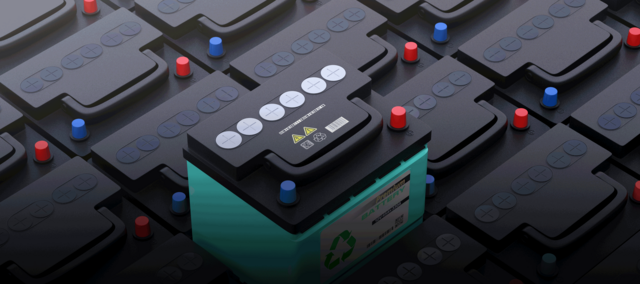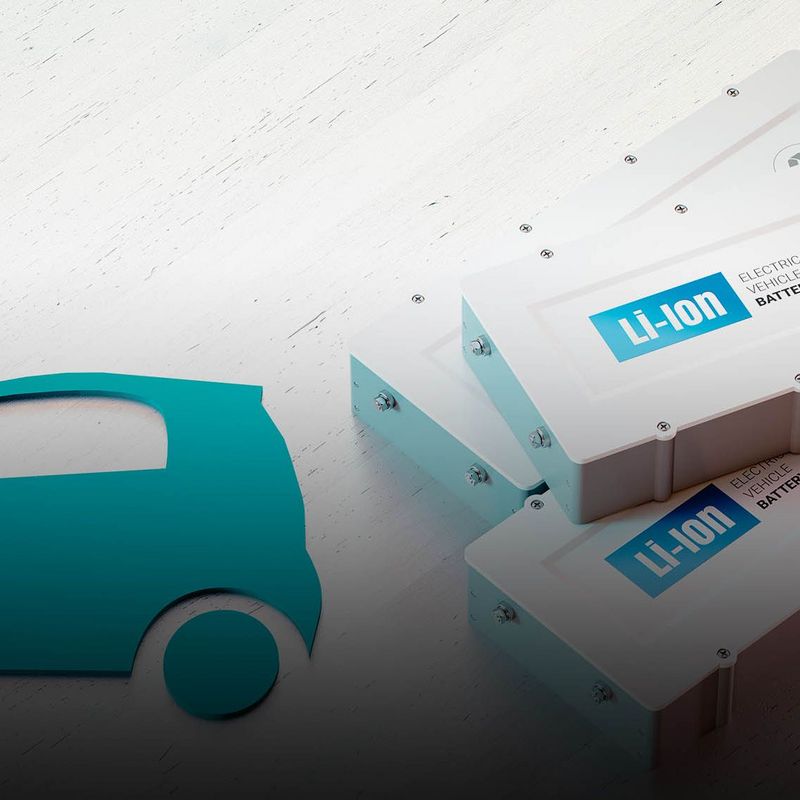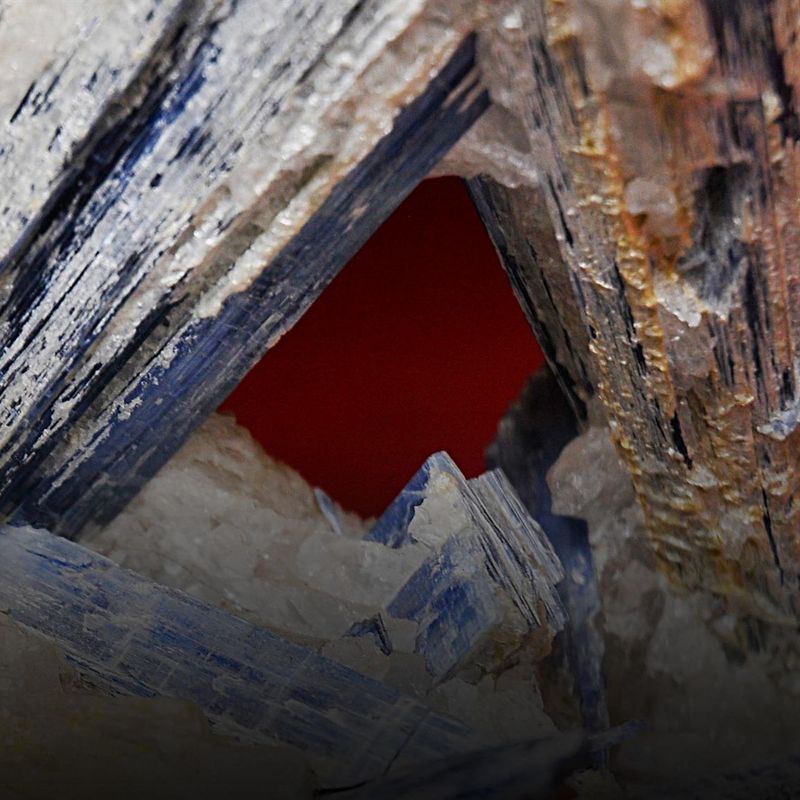12 November 2020
Over the last few months, registrations of electric cars and plug-in hybrids in Germany have scaled unprecedented heights: almost 16 percent of all new cars registered in September were either partly or wholly battery-driven models. Electric mobility really does seem to be taking off in Germany as elsewhere. But this also means that the comprehensive recycling of EV batteries is going to be the burning issue of tomorrow.
The current sixty-four-million-dollar question for electric carmakers is this: how do you make and dispose of your batteries? After all, the battery is both the most expensive component in an electric vehicle and its biggest ecological encumbrance. Battery production uses a lot of energy — the majority of which comes from coal-fired power stations with the associated burden on the carbon budget. What’s more, the batteries contain a lot of expensive metals such as cobalt, nickel and lithium, which are in some cases extracted under conditions that are problematic for both people and the environment. It therefore appears to be an ecological, economic and ethical imperative to recycle as high a proportion as possible of these raw materials once a battery comes to the end of its active life.
The current EU directive stipulates that at least 50 per cent of the total weight of a lithium battery must be recycled. But the catch is this: the heavier the metal casing of any given battery cell, the greater the proportion already covered by recycling the shell — which means that the raw materials concealed within tend to get left out of the equation. According to recycling expert Bernd Friedrich, this approach neither requires nor even encourages the most comprehensive possible recycling of the batteries. “It would make a lot more sense to define separate quotas for target elements like cobalt, nickel, lithium or graphite,” says the head of IME Process Metallurgy and Metal Recycling at RTWH Aachen University.
And, according to a study by the ecological institute, it would indeed be possible in this way to extract a lot of valuable reusable material from old batteries for use in the next generation. Given an ambitious expansion of the recycling infrastructure, it should be possible to cover almost ten per cent of the global requirement for lithium, cobalt and nickel for electric cars through battery recycling; by 2050, this figure could rise as high as 40 per cent.
Sealed treasure chests of raw materials
From a technical point of view, batteries are unlikely to surrender their recyclables without a fight. Recycling processes will have to master not one but a whole series of challenges. The manufacturers use various methods to produce batteries of different sizes, which makes it difficult to automate the process of dismantling them. So, batteries initially have to be taken apart by hand using special screwdrivers until you get down to the individual cells. Moreover, the cells are firmly glued together to ensure that the battery installation does not sustain damage when the car is driven on bumpy roads. “This is great for the service life of the batteries, of course, but it makes recycling harder by definition,” Bernd Friedrich explains. “We should be designing batteries today with an eye on ensuring that we can recycle them more easily tomorrow,” the researcher insists.
Further major challenges are posed by the conductive electrolyte which is found inside lithium-ion cells. This viscous fluid contains toxic fluorine as well as being highly reactive and flammable. If the cells were simply to be broken up, the result might be a short circuit causing the whole battery to go up in flames. This is why recycling companies need to find a safe way to deal with this sensitive solution.
Recycling in extreme temperatures
Belgian recycling company Umicore is using extreme temperatures to tackle the raw materials in the batteries. In its plant close to Antwerp, the European market leader recycles some 7,000 lithium-ion batteries from smart phones, e-bikes and electric cars every year. These include the batteries which enabled the electric racing cars in the Formula E series to zoom around the race tracks in the first couple of years of the competition. The batteries are first discharged and then dismantled by hand down to their modules. They are then placed in a blast furnace. There, the plastics, the graphite and the liquid electrolyte burn away. Cobalt, copper and nickel melt at temperatures of up to 1,400 degrees to form an alloy. In a further stage, their different melting points and densities make it possible to separate them prior to further treatment using chemical processes. What remains is a slag consisting of lithium, iron and aluminium.
The method allows for more than 90 per cent of the cobalt, copper and nickel to be recycled, as was revealed by a pilot project conducted by Umicore and Audi. In the next step, the idea is for the materials to be reused by the carmakers in their new battery cells. Graphite, aluminium and the electrolyte cannot be recycled using this method, however. And the metal which gives the battery its name, lithium, can only be partially recycled, and that only with great effort. For the most part, the slag which contains the lithium is used for road construction — meaning that it is not then available for the production of new batteries. However, a hydrometallurgic process — one involving acids — can be used to extract it from the slag. Technically speaking, Bernd Friedrich says, this is bound to be restricted to the treatment plants at the lithium production sites in Australia or South America. “This would, however, mean that the lithium would have to be moved halfway around the world,” the recycling expert warns.
The melting method is basically relatively inexpensive and reliable but requires a lot of energy, only some of which can be covered by the residual current extracted from the batteries. What’s more, CO2 is released when the graphite is burnt off, further adding to the process’s carbon footprint.
The Duesenfeld company intends to extract significantly more recyclables from the batteries while using considerably less energy to do so
Shredding under a protective gas shield
The Duesenfeld company in Lower Saxony, Germany, intends to extract significantly more recyclables from the batteries while using considerably less energy to do so. The batteries are initially totally discharged before being dismantled using a screwdriver or an angle grinder. They are then fed into a shredder under a protective gas shield. The nitrogen atmosphere around the shredder ensures that the batteries emit no sparks, thereby ruling out the possibility of fire. Whereas, with the melting technique, the electrolyte is burnt off, in the process releasing toxic fluorine gas which then has to be filtered out of the waste air, the Duesenfeld method allows it to be at least partially recycled using condensation and distillation.
The granular mix that emerges out of the back of the shredder is then subjected to special acid treatment to separate out the fluorine. What remains can then be sorted using blowers, sieves or magnetic drums: the separator film, ferrous metals and non-ferrous metals, such as aluminium, go to form shreds, leaving behind a black powder consisting of graphite, lithium, nickel, manganese and cobalt. Duesenfeld’s current practice is to sell this “black mass” to other companies, which then go on to extract the recyclables from it. However, the company aims soon to separate these substances itself — using a hydrometallurgic process in a sulphuric acid bath. In this way, it should be possible to recycle up to 91 per cent of a battery. The method has already shown promising results in the laboratory. It will be Duesenfeld’s task of the next few years to demonstrate that the envisaged recycling ratio can also be realised on an industrial scale.
Modular principle
Alongside its pilot plant in Wendeburg close to Braunschweig and a planned chemical plant to treat the black mass, Duesenfeld is also very keen on decentralised recycling. The risk posed by their flammability means that old lithium-ion batteries can only be transported with extreme care, thus increasing both the labour and the cost involved in recycling them. Duesenfeld, on the other hand, wants to set its shredders up at local collection points, the technology for which will comfortably fit in a normal shipping container. This would make it possible to dismantle the batteries locally and to transport the granulate without risk to a central reprocessing facility.
Batteries in the ghost train
Accurec, a recycling firm in Mülheim, has elected to follow a middle way. Once they have been manually dismantled, the batteries are thermally treated, as they are by Umicore — in other words, subjected to heating. Where they differ from their Belgian counterparts, however, is that the focus is not on melting the metals contained in the batteries. “The modules and cells are fed through a furnace at 600 degrees — a bit like a ghost train,” explains recycling expert Friedrich, who worked with Accurec on the developing the method. At this temperature, the electrolyte and plastics break down into usable combustible gases like hydrogen and methane. The cells themselves can then be harmlessly shredded, and the components are then sorted using magnets or blowers. Accurec recycles about 2,500 tonnes of batteries each year in its Krefeld plant. Only up to 300 tonnes — the maximum the market currently has to offer — come from electric cars. After all, the electromobility market is young, and the batteries have a useful life of ten years. Between 53 and 60 per cent of the components of a battery are recycled at present. This does not yet include lithium, graphite or the electrolyte. But this is set to change. In the context of the LIBERO research project, RWTH Aachen aims to join forces with the technical university of Gothenburg, Accurec and other industrial partners to initiate a battery recycling procedure which generates as little waste as possible. “The vision we’re pursuing here at the institute is known as early-stage lithium removal,” recycling researcher Friedrich explains. Using a special process which involves the addition of CO2, the lithium is converted into lithium carbonate which can then be flushed out of the black mass with water. At the heart of this project, which is being funded by the German economics ministry, is the development of an installation which, like the Duesenfeld shredder, should be able to fit into a shipping container and whose modular construction should allow it to be expanded as and when required. “At the end of the day, we want to develop the blueprint to plan a pilot plant with the capacity to recycle 25,000 tonnes of lithium-ion batteries,” Friedrich explains.
Battery cell production in Europe
In the long term, the idea is for efficient recycling processes to supply European carmakers with raw materials for new batteries, thereby reducing their dependence on supplies from overseas. For this to succeed, however, battery cells will also increasingly have to be produced in Europe, Friedrich states. This is because the batteries would primarily be recycled in those places where the recovered resources would also actually be needed by the industry. “An ideal circular economy requires all the components in the cycle to be available in Europe,” the expert says. A view which is also increasingly gaining traction in politics.
It is the battery that constitutes about 40 per cent of the added value of an electric car. Over 80 per cent of battery cells are currently produced in Asia, with a mere three per cent coming from Europe. But this is set to change. At the end of 2019, the European Commission declared battery cell production to be an “important project of common European interest” or “IPCEI” for short. The countries involved — Belgium, Finland, France, Italy, Poland, Sweden and Germany — are accordingly permitted to subsidise companies to the tune of 3.2 billion euros; Germany is allowed to award 1.25 billion euros out of that total to companies and research institutes. “We aim to build the world’s most innovative and sustainable batteries in Germany and Europe and thereby to safeguard value creation and jobs in Europe. It’s for this reason that, with our approach, we are pursuing a holistic approach to include everything from the material and production through to recycling,” says German economics minister Peter Altmaier by way of explanation of the aim of the funding.
The projects being funded include, for instance, battery cell production plants planned by Opel in Kaiserslautern and near Munich by BMW and a lithium-ion factory to be operated by Varta in Nördlingen, Bavaria. BASF and Umicore are receiving state funding, among other things, for research into and the construction of recycling structures. For its part, the German research ministry is also investing ever greater sums in battery cell and recycling research. 500 million euros are being provided by the German government for the construction of a battery research facility in Münster. The state of North Rhine-Westphalia is contributing an additional 200 million, which is to go towards the construction of a battery recycling testing factory in Ibbenbüren, among other purposes. A team under Bernd Friedrich, in collaboration with the FH Münster university of applied sciences, has been entrusted with the job of designing the recycling plant. For its part, in June 2020 the German research ministry topped up the available amount of funding with a further 100 million euros for further research projects. 30 million of this sum has been allocated, among other recipients, to the recycling research team at the technical universities of Dresden and Braunschweig and RWTH Aachen University. This is an investment in the future, as it is admittedly the case that large numbers of old electric vehicle batteries may not reach the recyclers until the middle of the decade. “However, we need to be developing efficient recycling techniques now which can be scaled up and also be competitive,” says Bernd Friedrich by way of summary of the aims of the research efforts.
Does recycling make financial sense?
The economic viability of recycling stands or falls not only with efficient methods and batteries that can easily be dismantled. In practice, lithium recycling doesn’t yet have a major role to play. So far, it has simply been cheaper to extract new lithium than to devote money and labour to filtering it out of used batteries. As demand for the raw material increases, however, this may well change, at least to some extent.
At the moment, it is the recycling of nickel, copper and, especially, cobalt that makes real economic sense. This transition metal is the most expensive basic component in a lithium-ion battery, and yet, the working conditions in the country where it is mainly mined, Congo, mean that it is deemed a problematic raw material. It is for this reason, among others, that the carmakers are working towards further reducing the proportion of cobalt in car batteries. Where the proportion of cobalt in the cathode ten years ago was around 30 per cent, it is now significantly less than 20 per cent. VW aims to reduce its own cobalt proportion from the current level of 12 to 14 per cent to five per cent in the next five years. According to its own figures, Tesla’s cobalt share is only 2.8 per cent, and it aims to reduce that figure to virtually nothing.
Reducing the share of precious metals in battery cells will make electric cars cheaper — but, on the other hand, it will also render recycling less lucrative. “The raw materials recovered just won’t cover the costs any more,” explains recycling expert Friedrich. “In the medium term we need to get to the point where the manufacturers and customers pay some of the costs of recycling through a disposal fee.” By way of comparison, a return system for lead-acid starter batteries from conventional cars which has been in place since 2009 has led to the present return and recycling ratio for those batteries of 95 per cent.
ABOUT
Bernd Friedrich is the head of IME Process Metallurgy and Metal Recycling at RTWH Aachen University. The metallurgist is working with his team on the development of a recycling concepts for all standard battery systems.



